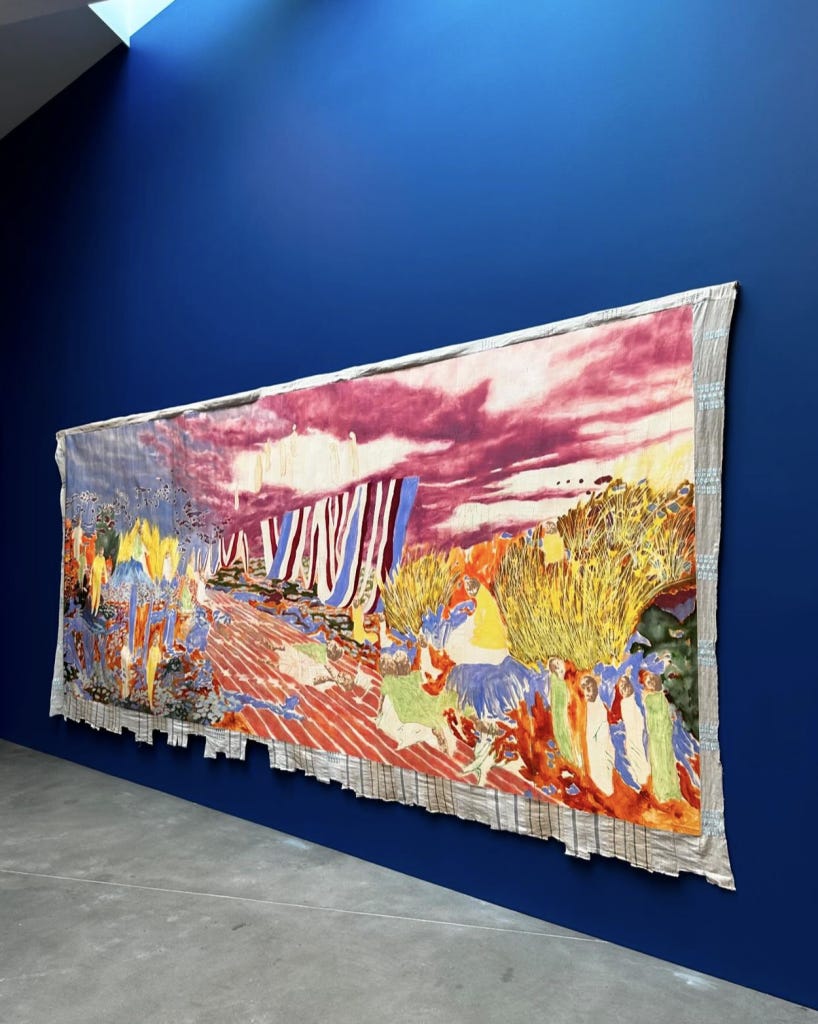Navigating The Art Market: Understanding The Artist Journey From Newcomer to Established Artist (and What It Means for New Collectors)
Art
If you’re new to the art world and interested in becoming a collector, understanding the journey of an artist can be incredibly helpful. It can guide your decisions on when and how to invest in art. Here’s a guide to the typical stages of an artist’s career and how you, as a collector, can navigate and engage with each stage.
1. The Early-Career Artist: The Excitement of Discovery
The phase of exploration and development for the artist.
Every artist starts as a newcomer, exploring and developing their craft. For collectors, this stage can be an exciting opportunity to discover fresh talent before the rest of the world catches on.
What does this look like?
Building a Portfolio: New artists are busy creating a cohesive body of work that showcases their skills and ideas. This is their initial offering to the world, and it’s where you might find raw, innovative work.
Exhibiting in Small Venues: Look for new artists in local group shows, open studios, or on online platforms like Instagram. These early exhibitions are often where collectors can acquire work at more accessible prices.
What this means for collectors:
Potential for Growth: Investing in a new artist’s work can be rewarding both personally and financially if the artist’s career takes off. However, it’s essential to buy what you love, as not all new artists will become stars.
Supporting Emerging Talent: By purchasing work from new artists, you’re supporting them at a critical stage in their development, which can be incredibly fulfilling.
2. The Emerging Artist: Investing in Potential
The Recognition and Growth phase.
As artists develop, they move into the “emerging” stage, gaining recognition and growing their presence in the art world. For collectors, this is an ideal time to invest, as the artist’s career trajectory is becoming clearer, but prices may still be relatively accessible.
What does this look like?
First Solo Exhibitions: An emerging artist’s first solo show is a significant milestone. Collecting from these exhibitions can be a strategic move.
Critical Recognition: Emerging artists might start getting attention from critics, curators, and the media, which can increase the value of their work.
Awards and Residencies: Artists who receive awards or participate in residencies are often on an upward trajectory. Keep an eye on these achievements as indicators of future success.
Gallery Representation: If a reputable gallery has started representing an emerging artist, it’s a sign that the artist has potential. Gallery representation often brings increased visibility and opportunities for the artist.
What this means for collectors:
Strategic Investments: At this stage, the artist’s work is gaining credibility, making it a good time to invest. However, it’s crucial to research and understand the artist’s trajectory and market position.
Networking and Engagement: Attending exhibitions, networking with gallery owners, and engaging with the art community can help you discover and connect with emerging artists.
3. The Established Artist: Acquiring Iconic Works
The Consolidation and Influence phase
Established artists are recognized figures in the art world with significant influence and a lasting legacy. Collecting work from an established artist is often seen as a safe and prestigious investment.
What does this look like?
Major Exhibitions: Established artists frequently have their work showcased in major galleries, museums, and international art fairs. Their art is often seen as a solid investment.
Critical and Academic Acclaim: Their work may be the subject of academic study, and they might have published monographs or retrospective exhibitions that solidify their status.
High Market Value: An established artist’s work typically commands higher prices, both in primary sales and in the secondary market (auctions).
Legacy Building: Established artists often focus on their legacy, whether through teaching, public projects, or collaborations. Their influence can also extend to younger artists and broader trends in the art world.
What this means for collectors:
Stable Investments: While more expensive, purchasing work from established artists can be a stable investment. Their reputation and market value are often secure, making their work a valuable addition to any collection.
Building a Prestigious Collection: Owning work from established artists can enhance the prestige of your collection and provide a foundation to build upon as you explore other, less established artists.
Key Takeaways for Collectors
Consistency: Look for artists who consistently produce high-quality work. Whether new, emerging, or established, consistency is a good indicator of potential and reliability.
Adaptability: Artists who adapt to new trends, technologies, and market conditions often have longevity. This adaptability can make their work a valuable long-term investment.
Supporting Artists: Regardless of the stage, collecting art supports the artist’s career. As a collector, your investment helps artists continue to create and innovate, contributing to the broader art ecosystem.
Each artist’s journey is unique, and as a collector, your path can be just as personalized. Whether you’re drawn to the excitement of discovering new talent, the strategic investment in emerging artists, or the stability of established names, the key is to collect what resonates with you. By understanding the different stages of an artist’s career, you can make informed decisions that reflect both your taste and your investment goals.



